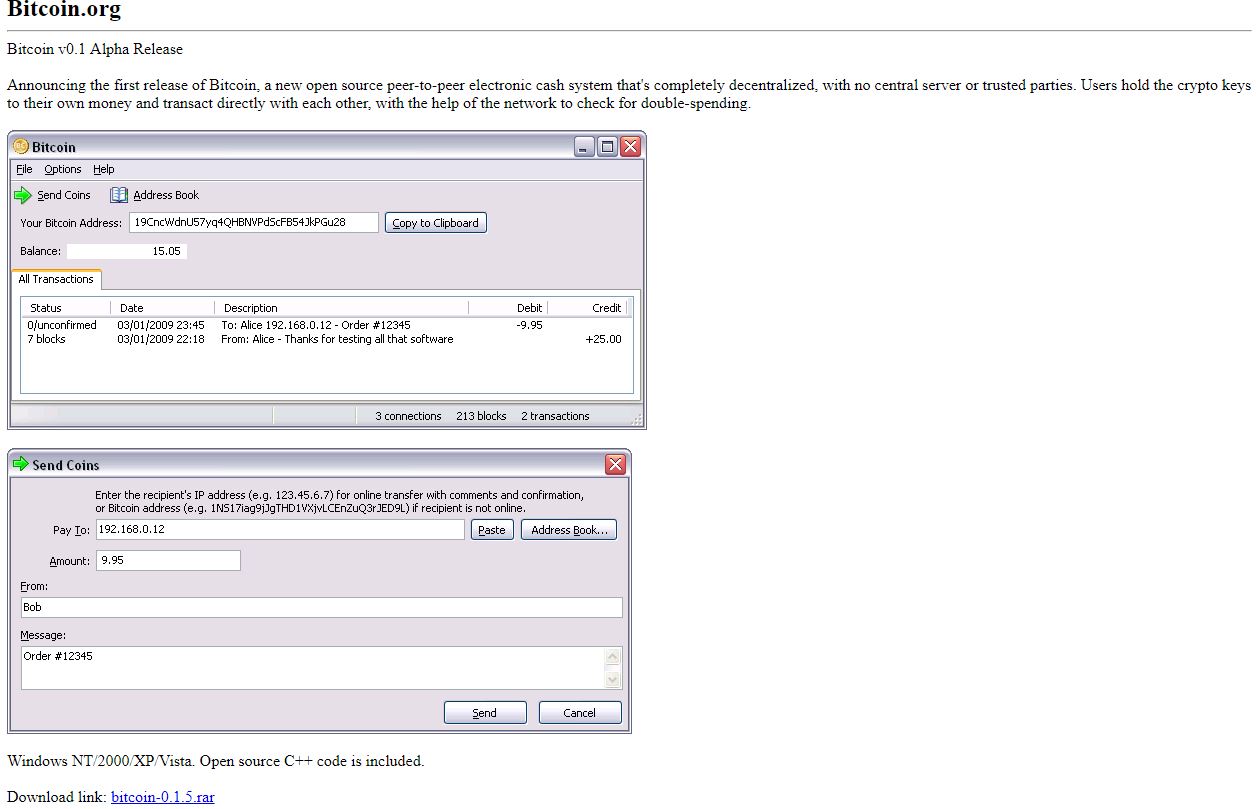On January 8, 2009, Satoshi Nakamoto wrote to the Metzdowd cryptography mailing list about the initial release of Bitcoin. It was not his first e-mail on the subject. However, it was the first when he had a working product to show for his idea. With no salutations, the e-mail starts out:
Announcing the first release of Bitcoin, a new electronic cash system that uses a peer-to-peer network to prevent double-spending.
These features are important to cryptographers, particularly the double-spend problem. Cryptographers still work on the problem today, with Satoshi’s Bitcoin as a key studying point. Satoshi’s solution involves decentralization and consensus rules.
Fomenting an Early Blockchain Network
Satoshi asks people to set up a node as a way of “helping the network a lot.” He also says that if people want some coins, they can pretty easily get them given the “ridiculously easy” difficulty level that Bitcoins started with. Bitcoin difficulty at time of writing, for the last mined block (557,643), is 5,618,595,848,853.28. That figure plays into the amount of time it takes miners to find the hash for the next block. At the time of Satoshi’s e-mail, difficulties would have been far lower. Block 10, which was mined 10 years ago today, had a difficulty of just 1.
You can get coins by getting someone to send you some, or turn on Options->Generate Coins to run a node and generate blocks. I made the proof-of-work difficulty ridiculously easy to start with, so for a little while in the beginning a typical PC will be able to generate coins in just a few hours. It’ll get a lot harder when competition makes the automatic adjustment drive up the difficulty.
A typical block reward (before fees played much into the mining game) from the earliest days equals over $200,000 on today’s market. It would have taken roughly ten minutes to mine with no special hardware involved. The majority of Satoshi’s coins remain unspent, however.
Bitcoin Experimental Software: Use at Own Risk

Satoshi warns of a possibility the network might have to “restart.”
The software is still alpha and experimental. There’s no guarantee the system’s state won’t have to be restarted at some point if it becomes necessary, although I’ve done everything I can to build in extensibility and versioning.
Bitcoin has gone through 16 full point versions since then. It is still far away from a “1.0” release and still comes with a disclaimer as to its developmental nature. The codebase developed by Satoshi has spawned the launch of thousands of alternatives as well as other blockchain implementations and designs. It remains the dominant cryptocurrency with the highest price, market capitalization, and degree of liquidity.
If Satoshi Nakamoto is alive, he is either proud or terrified of what his creation has become. The cryptocurrency market is worth over $100 billion today. It isn’t possible without the first version of Bitcoin. Thus we note the passing of 10 years since it was first announced.
Featured Image from Shutterstock








